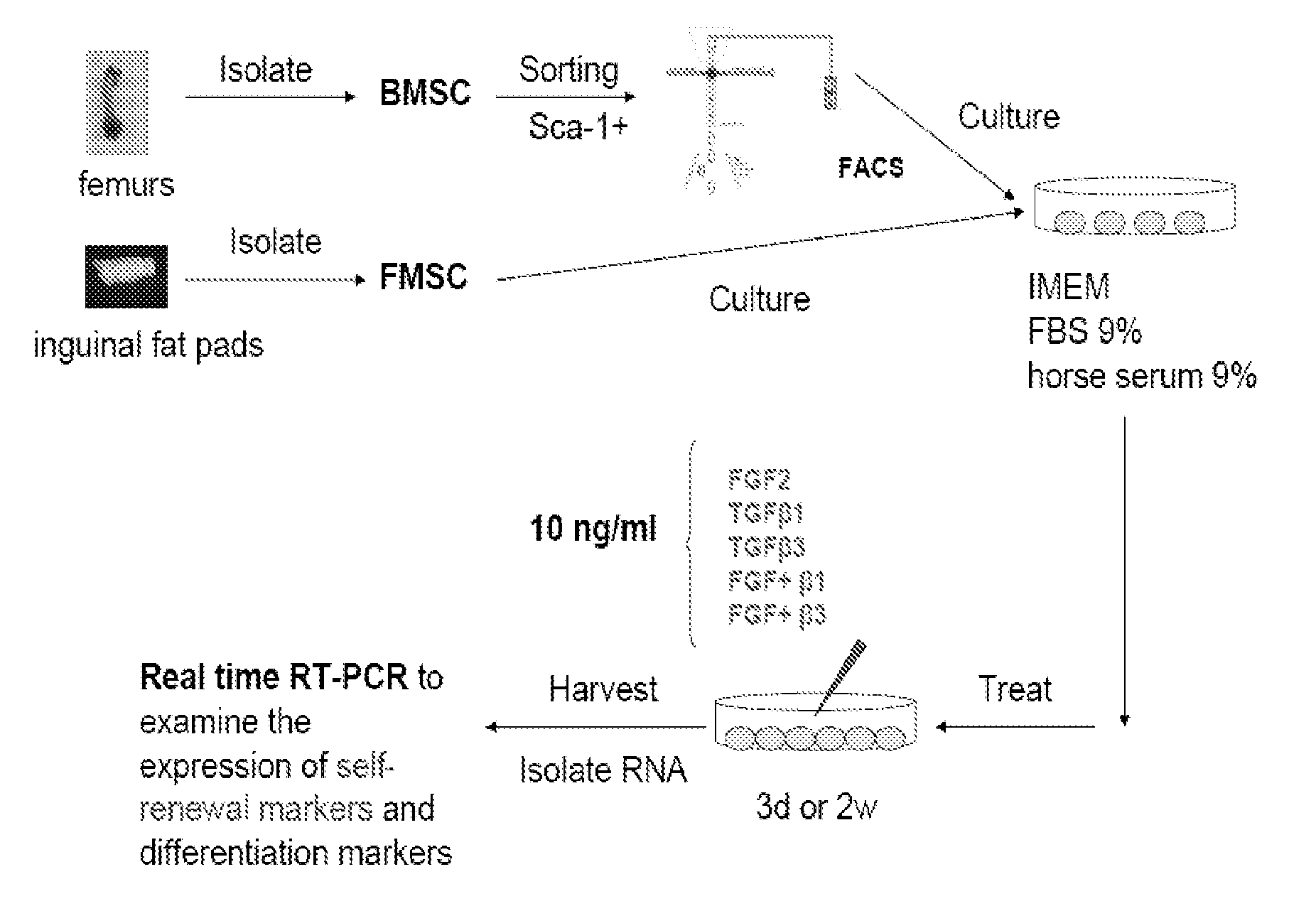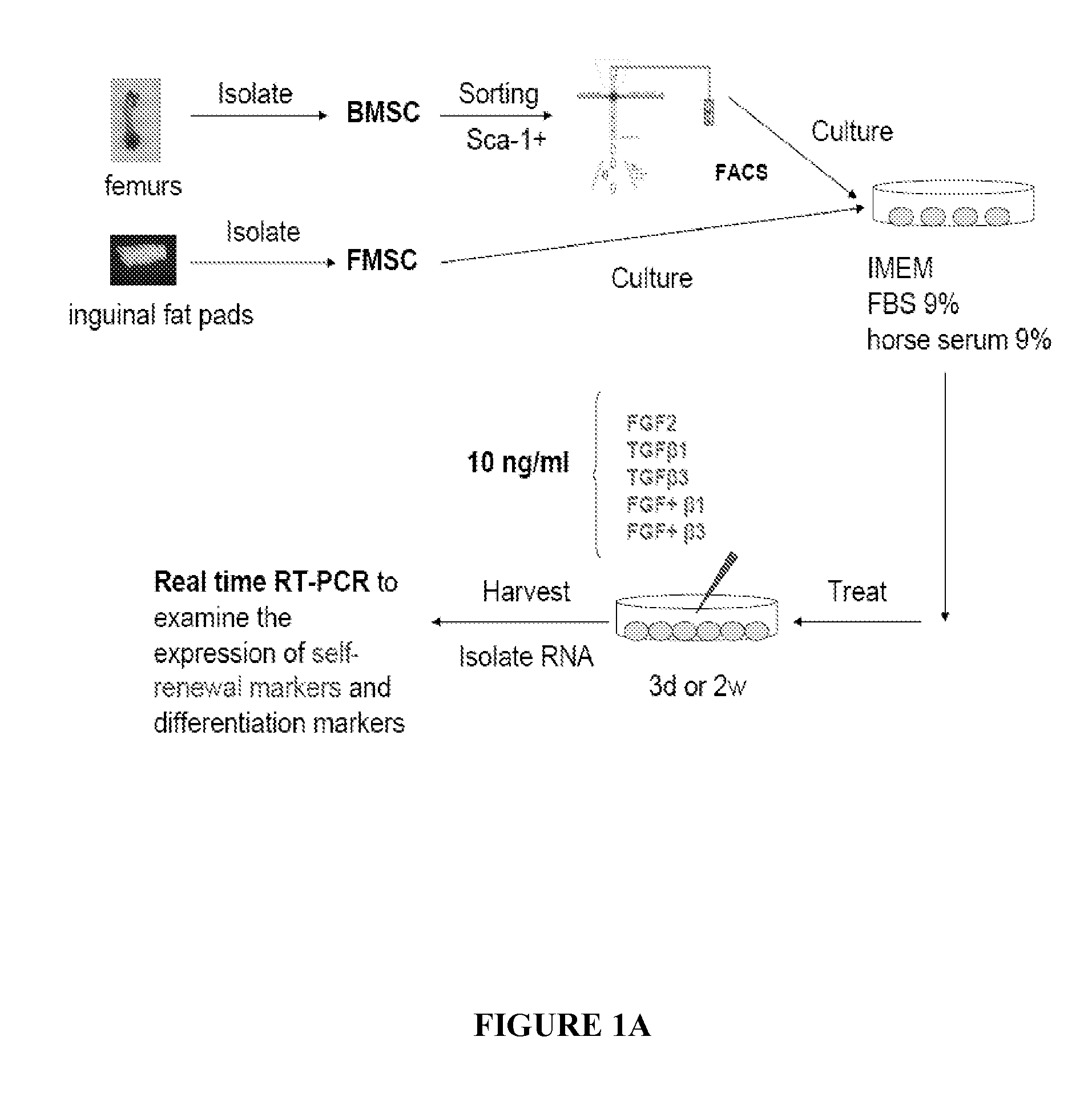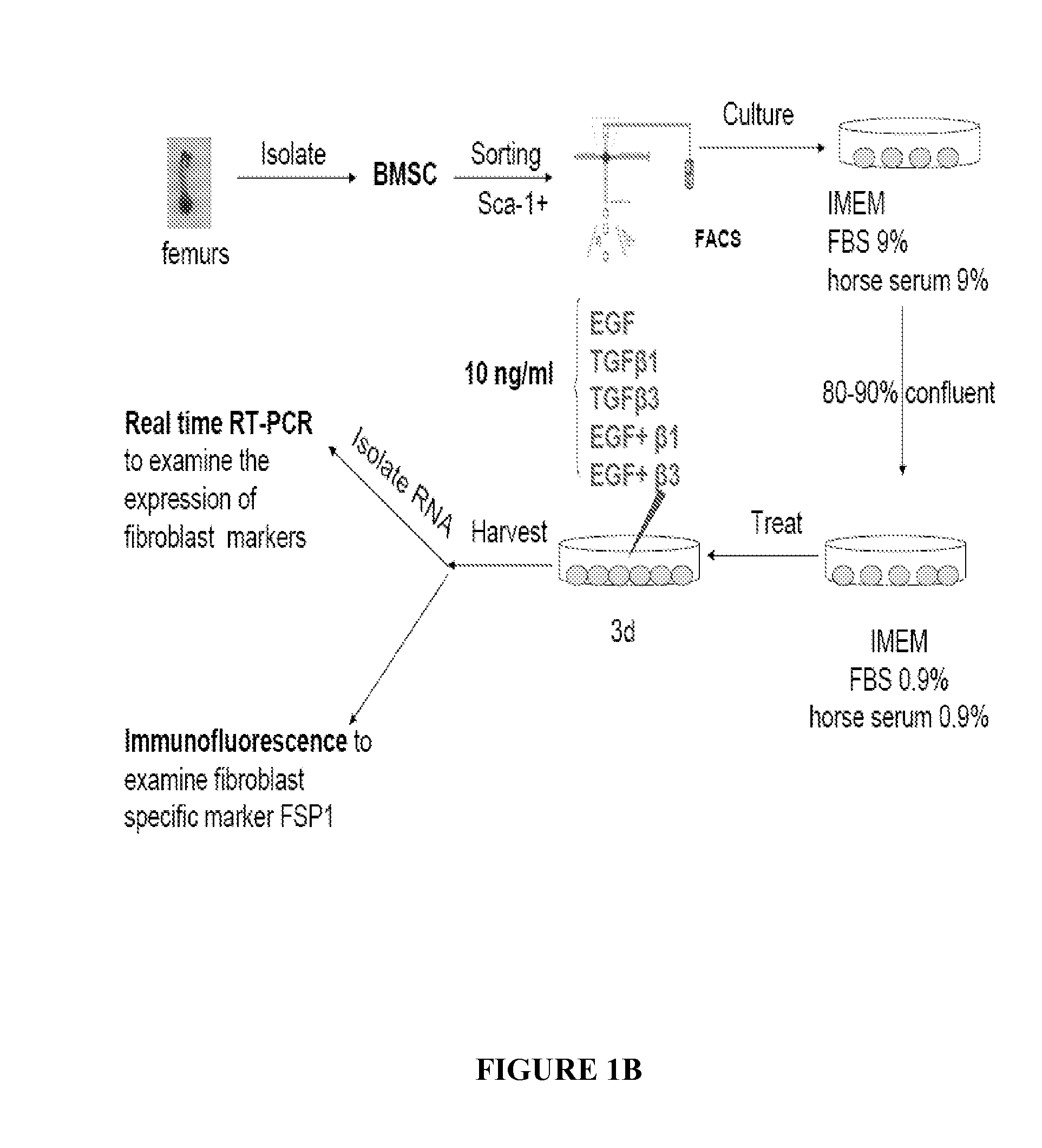Differentiation of mesenchymal stem cells into fibroblasts, compositions comprising mesenchymal stem cell-derived fibroblasts, and methods of using the same
a technology fibroblasts, which is applied in the field of differentiation of mesenchymal stem cells into fibroblasts, can solve the problems of short-lived benefits, and achieve the effect of avoiding immune rejection issues and risks of infection
- Summary
- Abstract
- Description
- Claims
- Application Information
AI Technical Summary
Benefits of technology
Problems solved by technology
Method used
Image
Examples
example 1
Isolation and Culture of Murine Bone Marrow-Derived Mesenchymal Stem Cells
[0082]Mesenchymal stem cells (MSC) from mouse bone marrow were isolated according to Peister et al (Peister, Mellad et al. 2004). Briefly, three-week old female and male BALB / c mice were individually euthanized using CO2. The femurs and tibiae were removed, cleaned of all connective tissue, and placed on ice in 2 mL of complete isolation media (CIM) that consisted of α-MEM supplemented with 20% fetal bovine serum (FBS; Atlanta Biologicals, Atlanta, Ga.), 100 U / mL penicillin, 100 μg / mL streptomycin, and 12 μM L-glutamine. All media and supplements were purchased from Invitrogen (Carlsbad, Calif.) unless otherwise specified. The ends of each tibia and femur were clipped to expose the marrow, flushed out using a 20 gauge needle, and centrifuged for 1 minute at 1200 rpm. The pellet was resuspended in 1 mL CIM with a micropipette. The cells from 2 mice were plated in 10 mL CIM in a 100 mm culture dish.
[0083]After 2...
example 2
Confirmation of Mesenchymal Stem Cell Phenotype
[0084]Expression of mesenchymal cell markers
[0085]In contrast to progenitor cells, multipotent stem cells lack contact inhibition. It was noted that isolated bone marrow derived MSC that were Scal positive lacked contact inhibition when cultured (data not shown).
[0086]Isolated MSC were analyzed by for expression of MSC markers. As determined by RT-PCR, mesenchymal stem cells expressed surface markers such as Scal and ABCG2 (data not shown). As determined by RT-PCR, mesenchymal stem cells also expressed Sox9, Activin, Oct4, Bmi1, Hand1, IGF2, MTS1, Col1, Col3, Col15, Col18, Prolyl hydroxylase, Stella, but expressed low levels of or were negative for Bcl2, UTF1, Nanog, Tert, Ecadherin, and Keratin5 (data not shown). Mesenchymal stem cells do not express SSEA1, SSEA3, or SSEA4 as determined by RT-PCR (data not shown).
[0087]Mesenchymal stem cell isolated from adult murine femur bone marrow at passage 5 were attached to a tissue culture plat...
example 3
Fibroblast Differentiation
[0099]Fibroblast Differentiation
[0100]At passage 5 or 6, BMSCs were placed in 60 mm culture dishes at a density of 2.5×105 cells / well in CEM. When cells reached 80-90% confluence, the cells were cultured in fibroblast differentiating media, e.g., the media was supplemented with 10 ng / mL of cytokines (TGF-β1, bFGF, and / or EGF; PeproTech Inc, Rocky Hill, N.J.) for 3 or 14 days. Media was changed and cytokines were replenished every other day. The media can be, for example, IMDM media with low serum (0.9% FBS, 0.9% horse serum) with 10 ng / mL of TGF-β1, bFGF, and / or EGF, or just with 10 ng / mL of TGF-β1 and EGF.
[0101]Characterization of Mesenchymal Stem Cell-Derived Fibroblasts by Real-Time RT-PCR
[0102]Total RNA was isolated after 14 days using TRIzol (Invitrogen, Carlsbad, Calif.). RNA was dissolved in ddH2O and stored at −80° C. The yield of RNA was determined by measuring absorbance at 260 nm using a spectrophotometer (Thermo Fisher Scientific, Inc. Waltham, ...
PUM
| Property | Measurement | Unit |
|---|---|---|
| concentration | aaaaa | aaaaa |
| concentration | aaaaa | aaaaa |
| concentration | aaaaa | aaaaa |
Abstract
Description
Claims
Application Information
 Login to View More
Login to View More - R&D
- Intellectual Property
- Life Sciences
- Materials
- Tech Scout
- Unparalleled Data Quality
- Higher Quality Content
- 60% Fewer Hallucinations
Browse by: Latest US Patents, China's latest patents, Technical Efficacy Thesaurus, Application Domain, Technology Topic, Popular Technical Reports.
© 2025 PatSnap. All rights reserved.Legal|Privacy policy|Modern Slavery Act Transparency Statement|Sitemap|About US| Contact US: help@patsnap.com



